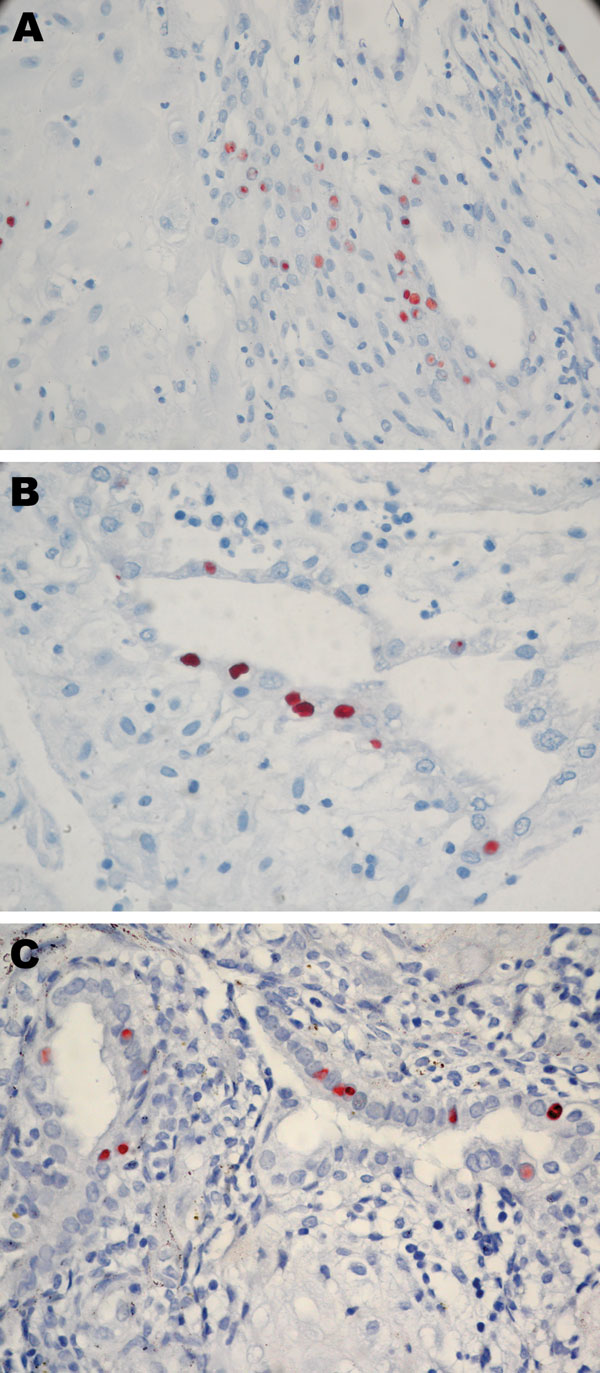Volume 17, Number 9—September 2011
Research
Role of Chlamydia trachomatis in Miscarriage
Figure 2

Figure 2. Immunohistochemical analysis of placentas in Figure 1. These placentas were obtained from 3 patients positive for Chlamydia trachomatis by real-time PCR. A) case-patient 390; B) case-patient 235; C) case-patient 564. Immunohistochemical analysis demonstrated C. trachomatis–infected cells from endometrial glands. Original magnification ×600.
Page created: September 06, 2011
Page updated: September 06, 2011
Page reviewed: September 06, 2011
The conclusions, findings, and opinions expressed by authors contributing to this journal do not necessarily reflect the official position of the U.S. Department of Health and Human Services, the Public Health Service, the Centers for Disease Control and Prevention, or the authors' affiliated institutions. Use of trade names is for identification only and does not imply endorsement by any of the groups named above.